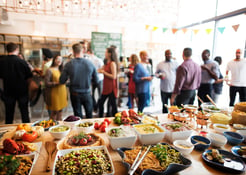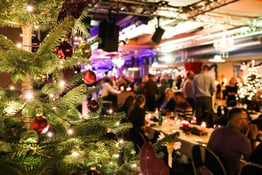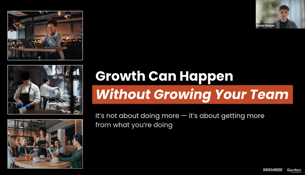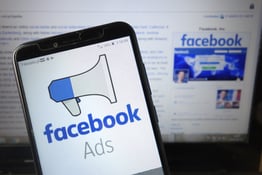Your menu is more than just a piece of paper. It’s a key piece of your business model. But Flapjack founder Patrick McDonnell says far too many restaurants overlook the importance of restaurant menu design.
“You see local restaurants that are doing well,” says McDonnell, “and they’re extremely intentional about the build-out of their kitchen and the items they’re selling…and then their menu is Times New Roman on a bright white piece of paper, and it looks really awful.”
McDonnell would know. In the three-plus years since he founded Flapjack, his company has provided custom restaurant menu design to thousands of clients – both large chains and small independent restaurants.
So how does McDonnell feel when he sees a good restaurant with a poorly designed menu?
“They’re clearly leaving money on the table,” he tells us.
Why Restaurant Menu Design Really Matters
Your menu could be doing more to help your restaurant profit margin. And the best part, says McDonnell, is that you can design a menu that does this “without changing any of the items that you're selling or raising your prices.”
McDonnell notes that the menu design, layout, and presentation are often afterthoughts for restaurants. But the truth is, your menu is a vital part of the dining experience.
As McDonnell says, “when you're running that much revenue through a single piece of paper, you should be highly incentivized to have that single piece of paper be as well structured as possible.”
After all, explains McDonnell, how you structure your menu can have a big impact on how your customers make decisions and how they spend their money. “We need to think about these things a little more intentionally,” he says. “Because a restaurant could easily pull another five or six figures a year just by rearranging things.”
5 Tips For Updating Your Menu Design to Boost Profits
If it’s been a few years since your last menu redesign, it may be time to ask whether your menu is doing everything it could be for your business. But before you get started, you’ll want to consider a few key questions.
“Why are people coming to your restaurant? What are they looking to order? And what do you do best?” McDonnell asks. “And then it's a question of how we make the menu easy to read in such a way that we can nudge people to those items.”
Below, we highlight some of McDonnell’s menu engineering tips for doing exactly that.
1. Put Your Page in the Right Order
You’re designing a menu, not writing a novel. Don’t bury the plot twists at the end. McDonnell says that the average customer will only spend about 90 seconds looking at your menu.
“So if you have something buried all the way on the back,” he says, “the likelihood that somebody gets there is pretty low.”
This is why it’s really important to think about both the length of your menu and the order of information. If your specialty items and your high-profit-margin dishes are tucked away, “you should either shorten your menu,” says McDonnell, “or you should really think about what you're putting toward the front.”
2. Discourage Comparison Shopping
This is one mistake that smaller restaurants commonly make, says McDonnell, and it actually makes it easier for customers to spend less. “We usually see a lot of prices in columns,” says McDonnell, “but that just makes it easier for people to price compare. “
This can prevent customers from making decisions based on what they really want. “Instead of reading about the item and falling in love with it first, and then seeing how much it costs,” says McDonnell, “you're encouraging customers to choose between two items based on price first.”

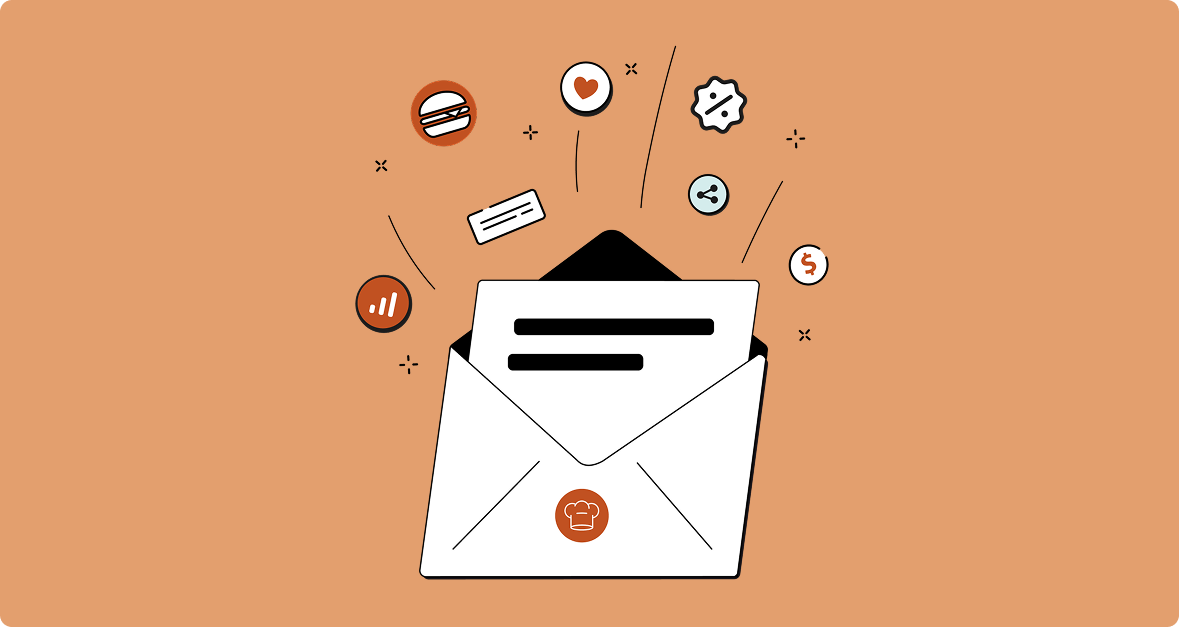
Subscribe to Our Monthly Marketing Newsletter
Get proven strategies and tools to attract new customers, boost engagement, and grow your brand.
The research is pretty clear, he says, that vertically aligned price columns generally result in smaller check sizes. Prioritize a layout that draws attention to the dishes themselves rather than their prices. And while you’re at it, lose the dollar signs.
McDonnell says that If you’re placing a U.S. dollar sign ($) next to the price tag for each item, you're doing it wrong. As long as your restaurant is located in the U.S., the dollar is the assumed currency. Including the dollar sign next to each price is cluttered, unnecessary, and out of style.
3. Use Smart Visual Cues
McDonnell says that clearly labeled iconography can help your customers understand their options faster and more clearly. This can be a great way to highlight the types of items that can improve your restaurant profit margin.
For instance, McDonnell recalls, “we did a brunch menu a little while ago where a large percentage of their sales were mimosas on Saturday and Sunday.” The restaurant offered a single mimosa for $15 and a carafe for $45, but provided no indication of exactly how many mimosas came in a carafe. Rather than ask, says McDonnell, most customers just ordered the single beverage.
“So we put labels on top of the items – little wine glasses showing diners how many mimosas came in a carafe. That change alone will make the restaurant another $18,000 just in mimosa sales.”
4. Spotlight Upsell Opportunities
Your menu is loaded with upselling opportunities – appetizers, beverages, and sides that pair perfectly with your star dishes. But making the most of these opportunities requires some thoughtful menu engineering.
“So with a brunch menu, for example, your diners are adding bacon, adding eggs, adding bread,” says McDonnell. “So how do you make these items visually pop out? How do you write about these items? How do you attract eyes to these areas of the menu?”
In truth, McDonnell explains, there’s quite a bit of science that goes into making these layout and design decisions. “We run a good amount of head-tracking studies with simulated eye-checking services to try to confirm that the designs we do actually work.”
5. Use Data to Drive the Layout
That’s not the only science that Flapjack uses to optimize restaurant menu design. It turns out that a lot of the menu engineering decisions are determined by your restaurant’s actual performance data.
When you sign on for a menu redesign with Flapjack, you’ll provide designers with access to your POS system. This gives designers the opportunity to dig into your current transaction data in order “to look for items that are commonly sold together, to spot items that aren’t selling, to find out, ‘What are your potential upsells? What are the complements? What are the substitutes?’”
Flapjack will use the answers to these questions to identify opportunities to improve the placement of certain items, alter your menu sequencing, and provide a more visibly intuitive arrangement of dishes and add-ons.
Getting Started On Your New Restaurant Menu Design
If you’re considering a menu redesign as a way to boost your restaurant profit margin, McDonnell offers one key piece of parting advice.
“Customers aren't coming to the restaurant to look at your menu,” he points out. “They're coming to your restaurant to have a great meal. The menu is just a vehicle for that. So you have to organize the menu to be super easy to skim, and to pull your customers’ attention to the items that they're going to love and that your restaurant is known for.”
McDonnell notes that if you effectively push your customers toward the right items, “not only will you be more profitable, but those customers are going to come back.”
Need a little more guidance as you update your restaurant’s menu design? Reach out today and chat with a seasoned industry veteran about all of your options.


